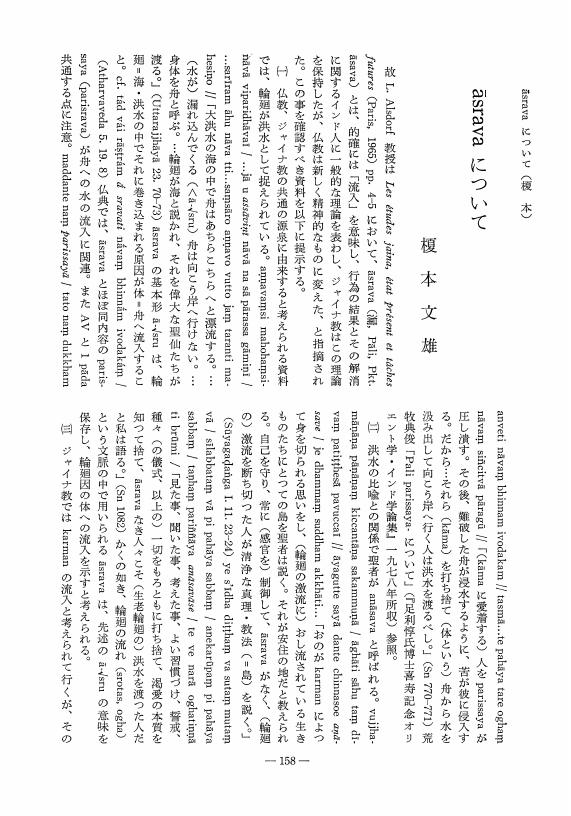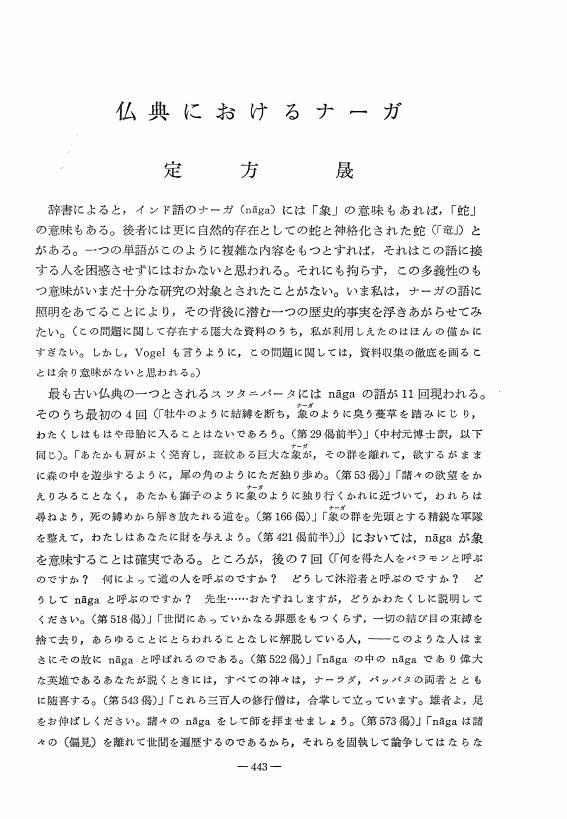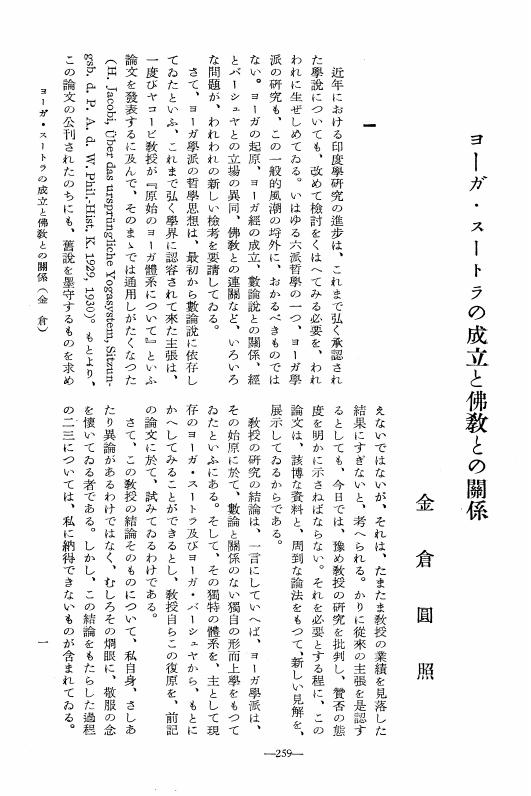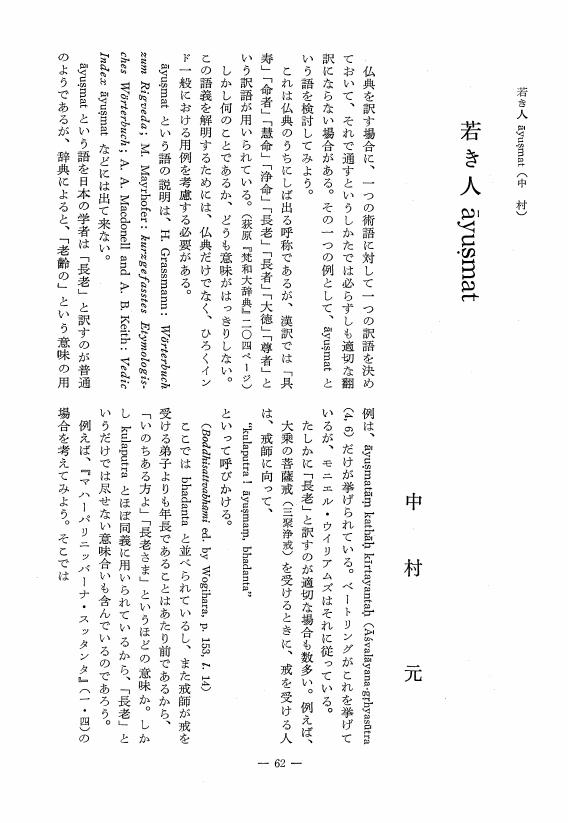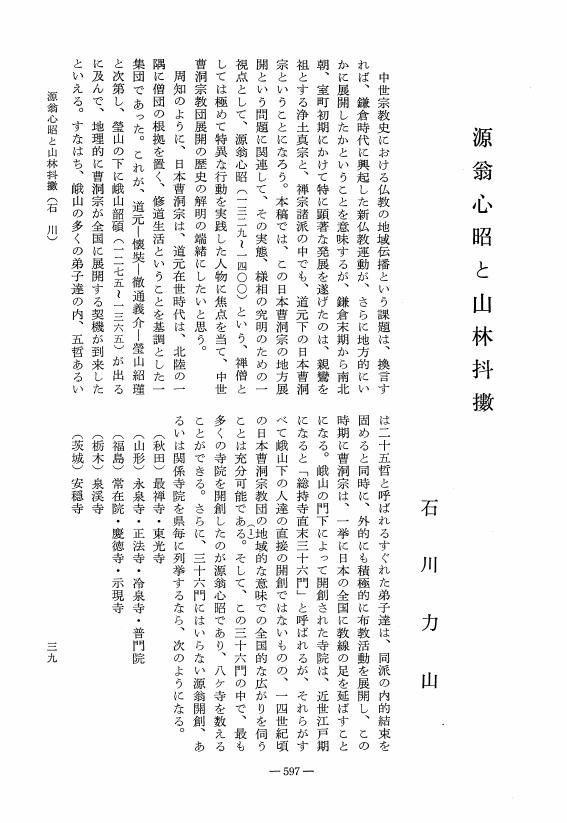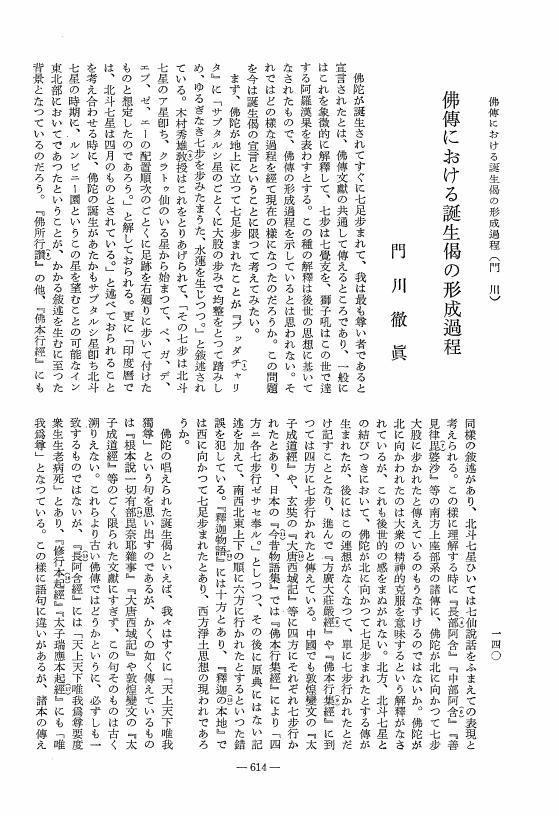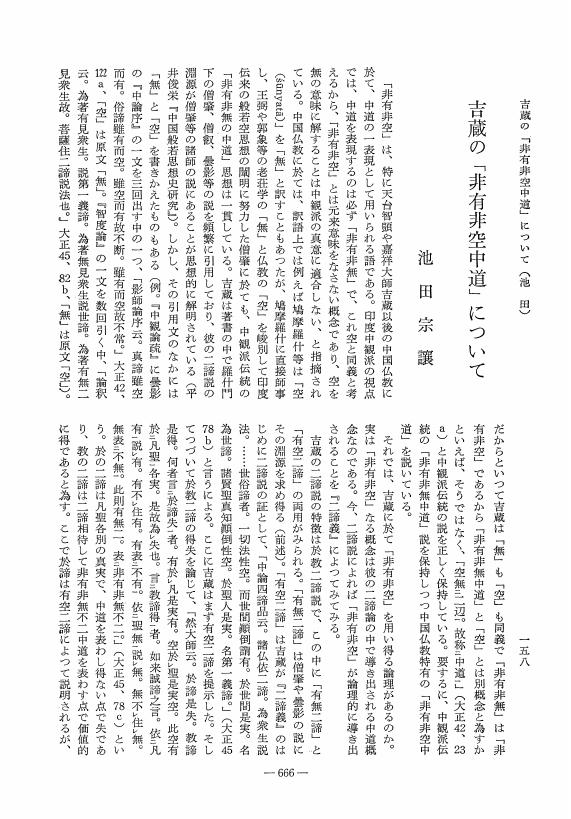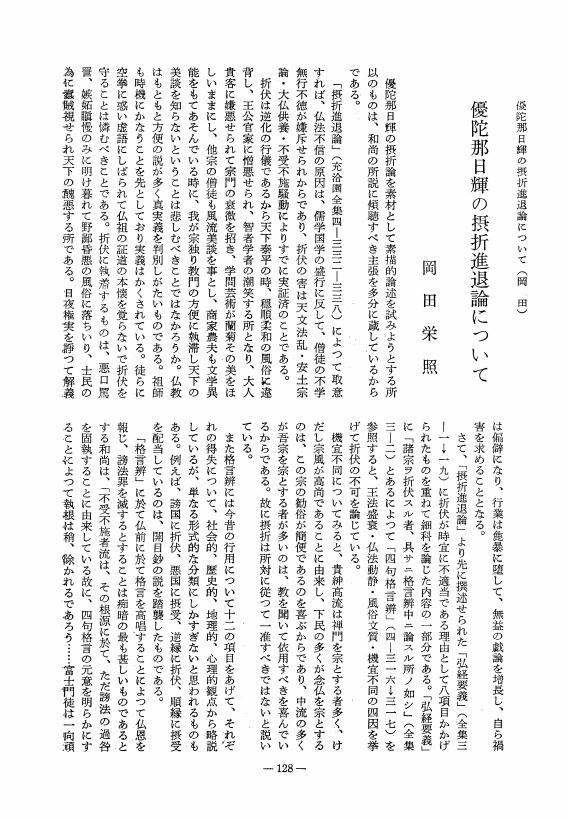3 0 0 0 OA サンスクリット文學に於ける HAMSA について
- 著者
- 長柄 行光
- 出版者
- JAPANESE ASSOCIATION OF INDIAN AND BUDDHIST STUDIES
- 雑誌
- 印度學佛教學研究 (ISSN:00194344)
- 巻号頁・発行日
- vol.17, no.2, pp.609-614, 1969-03-31 (Released:2010-03-09)
3 0 0 0 OA 現代に於ける殉教思想 -ある日本人僧侶の殉教を通して-
- 著者
- 笹森 行周
- 出版者
- JAPANESE ASSOCIATION OF INDIAN AND BUDDHIST STUDIES
- 雑誌
- 印度學佛教學研究 (ISSN:00194344)
- 巻号頁・発行日
- vol.55, no.2, pp.1028-1025,1291, 2007-03-20 (Released:2010-07-01)
Rev. Yokotsuka (1952-1984) was a disciple of the Most Ven. Nichidatsu Fujii, founder of Nipponzan Myohoji Buddhist Order in Japan. In Sri Lanka for 6 years he had been praying to bring about peace among peoples there.However he was shot dead on the street in Jaffna on 28 Oct. 1984 at the age of 32, while he was bowing to show veneration to the men who were going to assassinate him. This practice of bowing, through the veneration and worship of the Buddha-nature existing in all beings, is based on the practice by the Never Despising Bodhisattva in Chapter 20 of the Lotus Sutra.Rev. Yokotsuka's martyrdom was nothing more than an encounter between violence and the practice of Bowing, the supreme way of non-violence which in Japan was first practiced and embodied by the 13th. century's great monk Nichiren (1222-1282).Rev. Yokotsuka showed us some ideas of the Bodhisattva's vows taken by Mahayana Buddhist who see no enemies around them, believing that everyone is to become a Buddha. The practitioners find their places of mission voluntarily amongst real troubles. They practice the Bodhisattva's vows without the fear that they will be misunderstood, ridiculed, or beaten to death. This is the significance of Martyrdom in the present-day.
3 0 0 0 OA 普遍の觀念を手がかりとするヴァイシェーシカ體系の考察
- 著者
- 中村 元
- 出版者
- JAPANESE ASSOCIATION OF INDIAN AND BUDDHIST STUDIES
- 雑誌
- 印度學佛教學研究 (ISSN:00194344)
- 巻号頁・発行日
- vol.7, no.2, pp.695-708, 1959-03-30 (Released:2010-03-09)
3 0 0 0 OA asrava について
- 著者
- 榎本 文雄
- 出版者
- JAPANESE ASSOCIATION OF INDIAN AND BUDDHIST STUDIES
- 雑誌
- 印度學佛教學研究 (ISSN:00194344)
- 巻号頁・発行日
- vol.27, no.1, pp.158-159, 1978-12-31 (Released:2010-03-09)
2 0 0 0 OA 仏典におけるナーガ
- 著者
- 定方 晟
- 出版者
- Japanese Association of Indian and Buddhist Studies
- 雑誌
- 印度學佛教學研究 (ISSN:00194344)
- 巻号頁・発行日
- vol.20, no.1, pp.443-437, 1971-12-31 (Released:2010-03-09)
2 0 0 0 OA ヨーガ・スートラの成立と佛教との關係
- 著者
- 金倉 圓照
- 出版者
- Japanese Association of Indian and Buddhist Studies
- 雑誌
- 印度學佛教學研究 (ISSN:00194344)
- 巻号頁・発行日
- vol.1, no.2, pp.259-268, 1953-03-25 (Released:2010-03-12)
2 0 0 0 OA 高麗大蔵経の版木に関する一考察 -影印本を中心として-
- 著者
- 馬場 久幸
- 出版者
- Japanese Association of Indian and Buddhist Studies
- 雑誌
- 印度學佛教學研究 (ISSN:00194344)
- 巻号頁・発行日
- vol.51, no.2, pp.634-636, 2003-03-20 (Released:2010-03-09)
2 0 0 0 OA 若き人 ayusmat
- 著者
- 中村 元
- 出版者
- Japanese Association of Indian and Buddhist Studies
- 雑誌
- 印度學佛教學研究 (ISSN:00194344)
- 巻号頁・発行日
- vol.32, no.1, pp.62-66, 1983-12-25 (Released:2010-03-09)
2 0 0 0 OA 日蓮遺文『不動愛染感見記』小考
- 著者
- 高森 大乗
- 出版者
- Japanese Association of Indian and Buddhist Studies
- 雑誌
- 印度學佛教學研究 (ISSN:00194344)
- 巻号頁・発行日
- vol.50, no.1, pp.98-102, 2001-12-20 (Released:2010-03-09)
2 0 0 0 OA 源翁心昭と山林料〓
- 著者
- 石川 力山
- 出版者
- Japanese Association of Indian and Buddhist Studies
- 雑誌
- 印度學佛教學研究 (ISSN:00194344)
- 巻号頁・発行日
- vol.32, no.2, pp.597-602, 1984-03-25 (Released:2010-03-09)
2 0 0 0 OA 『五輪九字明秘密釈』における「五輪門」と「九字門」の関係について
- 著者
- 魚川 祐司
- 出版者
- Japanese Association of Indian and Buddhist Studies
- 雑誌
- 印度學佛教學研究 (ISSN:00194344)
- 巻号頁・発行日
- vol.55, no.2, pp.671-674,1252, 2007-03-20 (Released:2010-03-09)
- 参考文献数
- 3
Kogyo Daishi Kakuban's (1095-1143) Gorin kuji myo himitsushaku is often interpreted as the work in which he try to synthesize Shingon esoteric Buddhism and Pure land Buddhism. But how did he do it? In this paper, through analyzing the relation between chapter about the gorin (五輪) and chapter about the kuji (九字) in the Gorin kuji myo himitsushaku, I consider how Kakuban assimilated Pure land Buddhism into Shingon esoteric Buddhism.
2 0 0 0 OA 禅仏教における「仏」否定の二類型 -臨済と趙州-
- 著者
- 西村 恵信
- 出版者
- Japanese Association of Indian and Buddhist Studies
- 雑誌
- 印度學佛教學研究 (ISSN:00194344)
- 巻号頁・発行日
- vol.34, no.2, pp.469-480, 1986-03-25 (Released:2010-03-09)
2 0 0 0 OA 佛傳における誕生偈の形成過程
- 著者
- 門川 徹眞
- 出版者
- Japanese Association of Indian and Buddhist Studies
- 雑誌
- 印度學佛教學研究 (ISSN:00194344)
- 巻号頁・発行日
- vol.15, no.2, pp.614-615, 1967-03-31 (Released:2010-03-09)
2 0 0 0 OA 法然と親鸞の念仏 -信心との関わりについて-
- 著者
- 紅楳 英顕
- 出版者
- Japanese Association of Indian and Buddhist Studies
- 雑誌
- 印度學佛教學研究 (ISSN:00194344)
- 巻号頁・発行日
- vol.40, no.2, pp.680-686, 1992-03-20 (Released:2010-03-09)
2 0 0 0 OA 本質の原語について
- 著者
- 伊藤 秀憲
- 出版者
- Japanese Association of Indian and Buddhist Studies
- 雑誌
- 印度學佛教學研究 (ISSN:00194344)
- 巻号頁・発行日
- vol.21, no.1, pp.134-135, 1972-12-31 (Released:2010-03-09)
2 0 0 0 OA 阿含経にあらわれる鬼について -恩思想への展開をもとめて-
- 著者
- 釈舎 幸紀
- 出版者
- Japanese Association of Indian and Buddhist Studies
- 雑誌
- 印度學佛教學研究 (ISSN:00194344)
- 巻号頁・発行日
- vol.41, no.1, pp.12-18, 1992-12-20 (Released:2010-03-09)
2 0 0 0 OA 吉蔵の「非有非空中道」について
- 著者
- 池田 宗讓
- 出版者
- Japanese Association of Indian and Buddhist Studies
- 雑誌
- 印度學佛教學研究 (ISSN:00194344)
- 巻号頁・発行日
- vol.28, no.2, pp.666-667, 1980-03-31 (Released:2010-03-09)
2 0 0 0 OA 優陀那日輝の摂折進退論について
- 著者
- 岡田 栄照
- 出版者
- Japanese Association of Indian and Buddhist Studies
- 雑誌
- 印度學佛教學研究 (ISSN:00194344)
- 巻号頁・発行日
- vol.18, no.1, pp.128-129, 1969-12-25 (Released:2010-03-09)
2 0 0 0 OA 韓半島で作られた疑偽経について
- 著者
- 韓 泰植(普光)
- 出版者
- Japanese Association of Indian and Buddhist Studies
- 雑誌
- 印度學佛教學研究 (ISSN:00194344)
- 巻号頁・発行日
- vol.45, no.1, pp.322-314, 1996-12-20 (Released:2010-03-09)
2 0 0 0 OA vijñanaparinama-『大乗起信論』の背景-
- 著者
- 阿 理生
- 出版者
- Japanese Association of Indian and Buddhist Studies
- 雑誌
- 印度學佛教學研究 (ISSN:00194344)
- 巻号頁・発行日
- vol.52, no.2, pp.805-799, 2004-03-20 (Released:2010-03-09)


